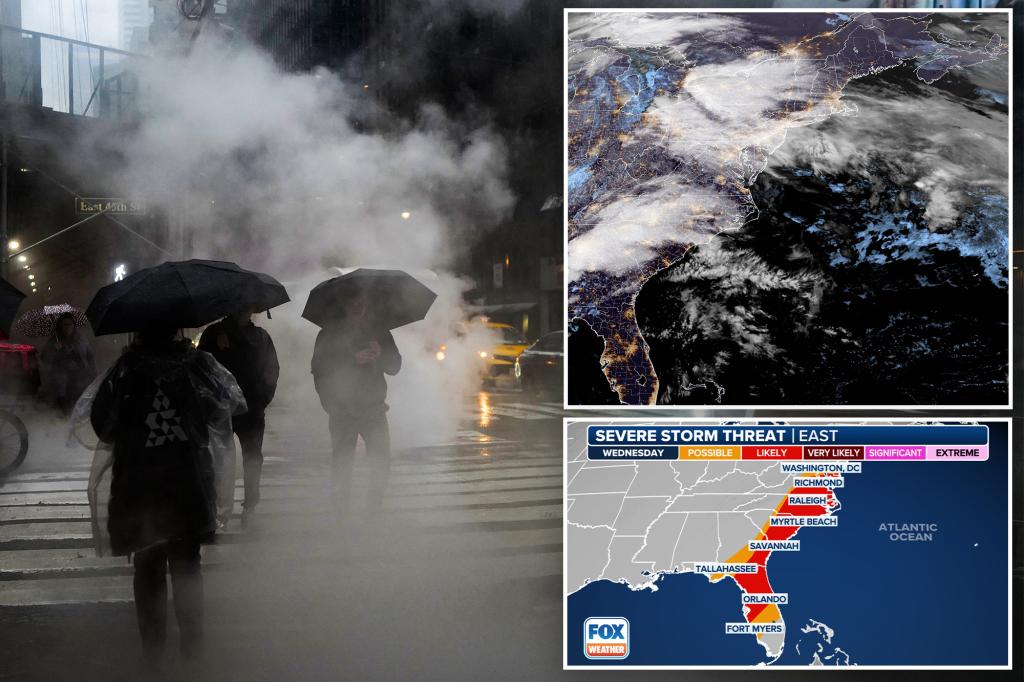A powerful storm system that impacted the nation’s heartland and the Ohio and Tennessee valleys has now moved eastward, posing a threat for severe storms along the Eastern Seaboard. This storm has shifted from a high risk to a lower risk for hail, damaging winds, and tornadoes. The Storm Prediction Center has identified areas from New Jersey to Florida as being at an increased risk for severe weather, including cities like Virginia Beach, Raleigh, Charleston, Jacksonville, Tampa, and Orlando. Approximately 36 million people are under threats that are considered possible and likely by the FOX Forecast Center.
Currently, a cold front is advancing eastward with showers and thunderstorms ahead of it. The storm system is moving quickly, with some cells moving at speeds exceeding 50 mph. Although some severe storms are still occurring, most are expected to be offshore by sunset. However, wintry weather is expected to continue on the northern end of the storm system through at least Thursday. April is typically a busy month for severe weather, with an increase in severe weather outbreaks as seasonal air masses clash over the eastern half of the country.
April is the second busiest month for tornadoes, after May, and is known for severe weather outbreaks. An El Niño climate pattern tends to lessen severe weather outbreaks in the Lower 48, and this year appears to be following the patterns seen during previous El Niño events. Data from the SPC shows that tornado activity for the year is below average, while reports of hail and damaging winds are closer to average.
The storm system has previously caused severe weather in the nation’s heartland, the Ohio and Tennessee valleys, and now poses a threat to the Eastern Seaboard. The risk for hail, damaging winds, and tornadoes has decreased but is still present. The Storm Prediction Center has identified areas from New Jersey to Florida as being at an increased risk for severe weather, including several major cities. The fast-moving storm system is expected to move offshore by sunset, but wintry weather will persist in the north. April typically experiences an increase in severe weather outbreaks, with tornado activity being especially common.
Meteorologist Steve Bender notes that the risk for severe weather has decreased from a 4 out of 5 to a 2 out of 5, but caution is still advised. The storm system is moving quickly across the country, with showers and thunderstorms ahead of the cold front. Severe weather alerts have been issued for numerous counties as the storm system progresses eastward. Overall, the year is experiencing below-average tornado activity but average reports of hail and damaging winds. The influence of an El Niño climate pattern is evident in the patterns observed during severe weather outbreaks.















